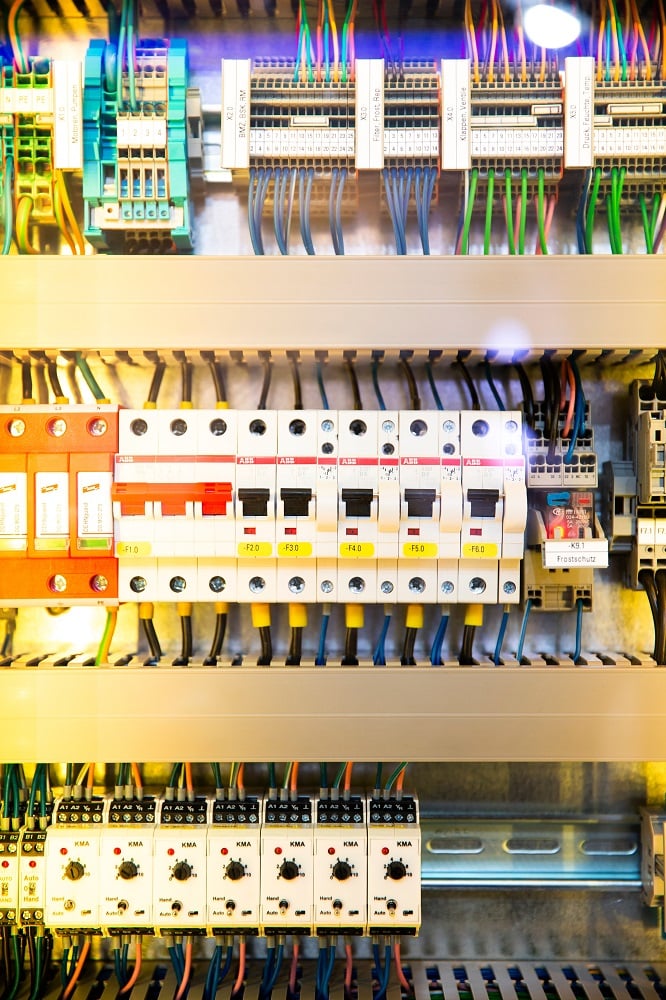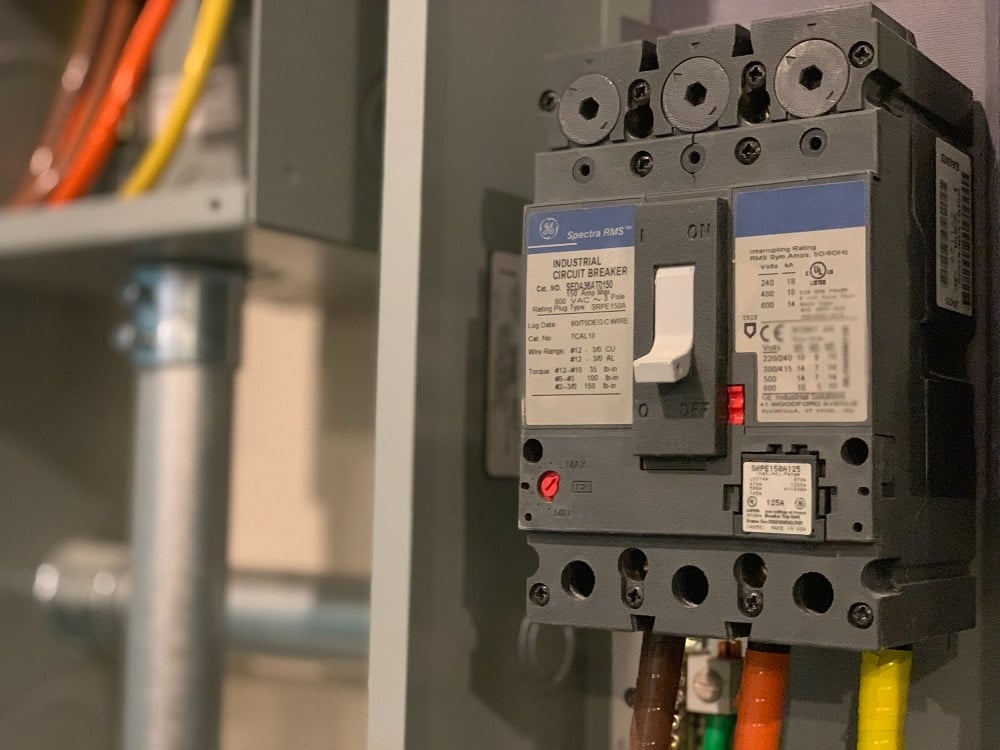With numerous electrical appliances at home, you can’t afford to take any chances when it comes to safety.
Since your daily life revolves around electrical devices, procrastinating may endanger the lives of many people. You should ideally conduct an inspection once every 30 days to see whether everything is working. But how do you prevent an accident, and what are the areas you need to focus on?
We know it’s a daunting task, and to help you, we’ve narrowed down the critical aspects for keeping you safe. Not only do you need to check the wires and connections, but everything from the switchboards to smoke detectors necessitates you to maintain them in top condition.
Some aspects may seem inconsequential but merit your attention just the same. As a result, follow the steps we’ve listed below to ensure your home is safe and sound.
Related Articles
Electrical Wiring Color Coding System 101
40 Tips on How to Lower Your Electric Bill Fast
Simple Guide To Making A Rental More Energy-Efficient
Home Electrical Safety Checklist


Outlets And Light Switches

You must start your inspection with readily visible devices and then work your way towards more intricate areas. In that regard, there are few things more apparent than checking the electrical outlet of your appliances and the light switches. Firstly, you must ensure your lights are working well, and the quality is intact.
If you’ve got a particular light that tends to flicker when switched on, you need to have it replaced. Ensure there are no loopholes in the connection and pay attention to whether the outlets feel warm when touched. It means you need to get it checked at the earliest by appointing a professional.
Meanwhile, on occasions, you may find the outlets and switches discolored, which underscores the fact that it needs to be replaced. In case it starts emitting some noise, immediately disconnect your appliance after taking the proper safety measures. You can also kill the power from the main supply if you find there’s a smell in the air, which may mean something is burning.
In such a scenario, contact an electrician and wait outside till help arrives. There’s no definitive way to prevent such a situation since small animals may make their way into the main power box and tamper with the wires. Besides, you can make sure that the plug correctly fits into the board, which reduces the chance of accidents.
It’s necessary to have sufficient outlets meaning you won’t have to use your extension cord much. However, if you do, it would be best to keep the wire away from your furniture for added safety.
Extension Cords

Speaking of extension cords, we come to the next area you need to focus on. Remember that you shouldn’t be using your extension cord for a prolonged period and certainly not permanently. Extension cables should ideally be used for specific purposes, and if possible, try to abstain from connecting heavy appliances to it.
For air conditioners and space heaters, never use extension cords as it can’t handle the load. Additionally, you need to ensure that the extension cord is rated for indoor and outdoor use and don’t ever compromise in this respect. It would be best never to take a chance where electricity is involved and regularly check the cord for signs of damage or cracks.
Apart from that, the usual points remain the same, and the cord should form a tight connection with the switchboard. Saying that, don’t nail it to the wall or drag it across any area where you might trip. Use your extension cord from time to time without being dependent on it.
Finally, check the capacity before connecting it to any appliance.
GFCIs And AFCIs

Let’s start by addressing the fundamental question – what are GFCIs and AFCIs? GFCI refers to Ground Fault Circuit Interrupters while AFCI stands for Arc Fault Circuit Interrupters, and you need to check both at a gap of 30 days. Moreover, if you’ve standard circuit breakers, we recommend switching to AFCIs since it’s more efficient at detecting electrical anomalies.
You can install GFCIs in your bathroom, kitchen basement, or garage, while AFCIs are more versatile and can be used throughout your home.
Smoke Detectors
Next, we come to smoke and carbon detectors, which provide prior warning if something is on fire. You need to install these on every floor, in all the bedrooms, and outside your sleeping space for maximum protection. Like some other gadgets, you need to have them checked after 30 days to ensure they are in top condition.
The ideal position for setting up the alarm is in the center of the ceiling for maximum coverage. Besides, even if you’ve to clean, it would serve you well to dust or vacuum gently to prevent tampering with the connection. In case you’re worried, you can press the TEST button to see if it’s functional.
Meanwhile, if you’re having work done on your house, you must not paint over the fire alarm. Read the instructions carefully and keep an extra set of batteries nearby when you hear the alarm beeping, which indicates that the battery is about to run out. Furthermore, it’s a must to install a new set of alarms after ten years.
Electrical Panel

One of the most important things to look out for is the electrical panel, which is the focal point for smooth functioning. Unless you’re a professional, you can’t take care of it yourself, and therefore you need to check the label for when it was last serviced. Also, ask the electrician when the next date is and make an appointment without fail.
Neglecting the electric panel leads to several issues, such as switches that malfunction or fuses which may blow. In some cases, the circuit breakers may end up continually tripping, which isn’t convenient, and regular maintenance goes a long way to ensure there’s no let-up in quality. Similarly, the circuit breakers feature an amperage rating, and you should know the rooms to which the breakers are connected. It’ll give you a better idea of what appliances can be installed and keep you vigilant about exceeding the limit.
Fire Safety

A faulty connection or appliance inevitably leads to fire, and that’s why you need to add fire safety to your checklist. First and foremost, you need to have a proper plan in place if a fire breaks out, and for that, you need to come up with an evacuation strategy.
Mark the shortest route to your doors and have a designated emergency exit along with a fire extinguisher to save valuable time. You may even conduct a demo run with your family or other members in your locality so that you can come to each other’s help.
Another thing to bear in mind is that people are often casual and tend to use a high wattage appliance in a low wattage outlet. It’ll undoubtedly lead to an accident, and you need to watchful or install tamper-resistant receptacles for more protection. It also comes in handy to prevent your children from experiencing electric shocks.
Using Your Senses

The best way to avoid untoward incidents is to use your senses, some of which we may have mentioned in passing. So, let’s delve into the details, and for starters, it’s essential to visually check the wires for signs of damage. Frayed cables need to be replaced at the earliest.
In some cases, you may even find chewing signs, which means you need to call pest control and take care of whatever critter is up to mischief.
Remember not to limit visual checks only to the wires; you need to inspect the external outlets as well. They should be appropriately sealed, and the best way to tell if they are okay is to conduct a GFCI test, which will cause the outlet to trip. If an appliance is plugged into an exterior outlet for long intervals, it may lead to the weather cover propping open.
Consequently, call a professional and have it fixed because the last thing you need is to have water or heat wreak havoc with the system. You can also ensure the outlet has access holes, which allows the cover to be closed without hampering connection to the appliance.
Up next is the sensation of touch, and all you need is to place your hand on the outlet to check for excessive heat. It’s natural for the outlet to heat up while in use, but it won’t ever get to the point where the slightest touch becomes unbearable. Meanwhile, if any appliance emits too much heat, you’re likely to pick up on a distinct smell, which is a sign of burning.
To locate the problem, you need to use a voltage tester to check the reading, which lies between 110 and 130V for standard outlets.
Things To Remember
While we’ve discussed the essential points, other aspects require equal attention. To prevent electrical hazards is to be extremely careful when using heat-producing appliances. You need to keep them away from materials like potholders and paper, which may catch fire, given their volatile nature.
Moreover, ensure you remove appliances that you have plugged into your kitchen and bathroom after use. People make the common mistake of leaving them on, which invariably leads to a fire, so it’s essential to be mindful. Similarly, take time to clean the exhaust fan, which often develops a thick layer of grease and lint.
It would be best if you abstain from using a portable heater in the bathroom because the chances are the voltage will not match. We recommend you use a ceiling or strip heater for the purpose and place it up high. But before you use any heater, it’s necessary to get an approval from any recognized testing laboratory or electrician expert.
Final Words
We’ve reached the end of our guide, and with any luck, you’ve learned how to be safe from electrical hazards.
It would help if you were proactive, and while it may appear tiresome, conducting inspections once a month isn’t a big deal. Be cautious, be safe, and keep an eye out for anomalies.
That’s all the time we have for today. See you soon!
Related Articles
16 of the Most Common Electrical Problems and Solutions You Should Know
Electrical Wiring Color Coding System 101
Electrical Service Panel Basics Every Homeowner Should Know
40 Tips on How to Lower Your Electric Bill Fast
13 Best Electrician Tool Belts
6 Best Solder Suckers for Electronics
Electrical Service Panel Basics Every Homeowner Should Know
13 Best Multimeters For Electronics Technicians
How to Test a Battery with a Multimeter?


